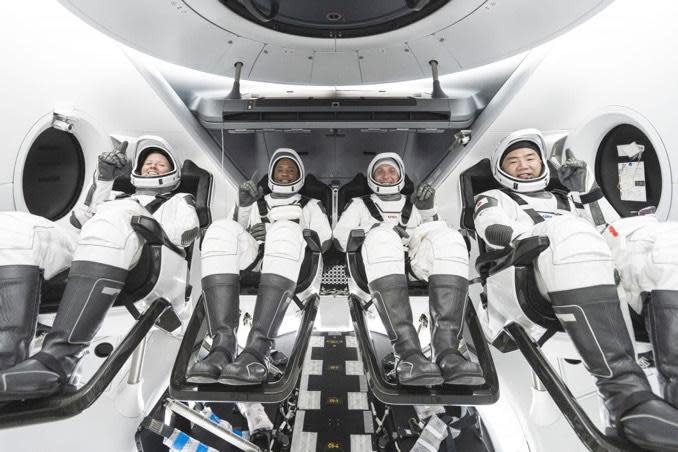NASA sets date for next SpaceX Crew Dragon launch
With two test flights behind them, NASA and SpaceX are targeting October 23 for the first operational launch of a Crew Dragon spacecraft on a flight carrying four astronauts to the International Space Station, space agency officials said Friday.
The "no-earlier-than" launch target assumes official NASA certification following a detailed review of data collected during a piloted Crew Dragon test flight earlier this summer. So far, officials say, no major issues have come to light that would prevent clearance to proceed with operational space station crew rotation missions.
If that holds up, the Crew Dragon capsule, perched atop a SpaceX Falcon 9 rocket, would blast off from historic pad 39A at the Kennedy Space Center around 5:47 a.m. EDT on October 23, although sources say the flight could slip a few more days when all is said and done.

On board whenever it takes off will be NASA astronauts Mike Hopkins and Shannon Walker, making their second space flight each, rookie astronaut Victor Glover, and veteran Japanese flier Soichi Noguchi, making his third flight to the space station. If all goes well, they will dock at the station's forward port the day after launch.
The SpaceX "Crew 1" launch comes on the heels of the company's historic Demo 2 mission, the first piloted test flight of a Crew Dragon capsule built under a commercial contract from NASA to help end the agency's sole reliance on Russian Soyuz spacecraft for transportation to and from the space station.
Building on a successful unpiloted test flight last year, the Demo 2 mission, carrying astronauts Douglas Hurley and Robert Behnken, went off without a hitch, launching on May 30 and docking at the space station the next day. After a two-month stay, the astronauts returned to Earth with splashdown in the Gulf of Mexico on August 2.
NASA managers initially targeted late September for the Crew 1 launch, but decided to move it after the Oct. 14 launch of two cosmonauts and a NASA astronaut aboard the Soyuz MS-17/63S spacecraft.
The Soyuz crew — Sergey Ryzhikov, Sergey Kud-Sverchkov and NASA astronaut Kate Rubins — will replace the lab's current crew — Expedition 63 commander Anatoly Ivanishin, Ivan Vagner and NASA astronaut Chris Cassidy. Ivanishin's crew plans to return to Earth on October 21 aboard their Soyuz MS-16/62S spacecraft.
Three days later, on October 24, the Crew 1 astronauts would arrive at the station to boost the lab's crew to seven.
Current plans call for Hopkins, Glover, Walker and Noguchi to spend six months aboard the station, returning to Earth at the end of April. About a month before they depart, NASA and SpaceX plan to launch another Crew Dragon — Crew 2 — with another three-man, one-woman crew that includes Behnken's wife, astronaut Megan McArthur.
While the eight Crew Dragon astronauts are aboard the station, the Russians plan to launch three fresh crew members aboard the Soyuz MS-18/64S spacecraft, clearing the way for Ryzhikov, Kud-Sverchkov and Rubins to return to Earth around April 17. Hopkins, Glover, Walker and Noguchi will follow suit less than two weeks later.
A wildcard in station planning is the status of Boeing's CST-100 crew ship. After problems during an unpiloted test flight last December, Boeing is gearing up for a second automated test flight late this year or in early January.
If that flight goes well, Boeing presumably will be clear to launch a piloted test flight to the space station with a crew of three on board: Christopher Ferguson, a former shuttle commander and now a Boeing vice president, and NASA astronauts Nicole Mann and Mike Fincke.
The station has two docking ports for both SpaceX and Boeing and it's not yet clear how the Boeing test flights will merge into the already planned SpaceX traffic.
What the peace deal between Israel and United Arab Emirates means for Middle East
Critics raise concerns over politicization of Barr's Justice Department investigations

